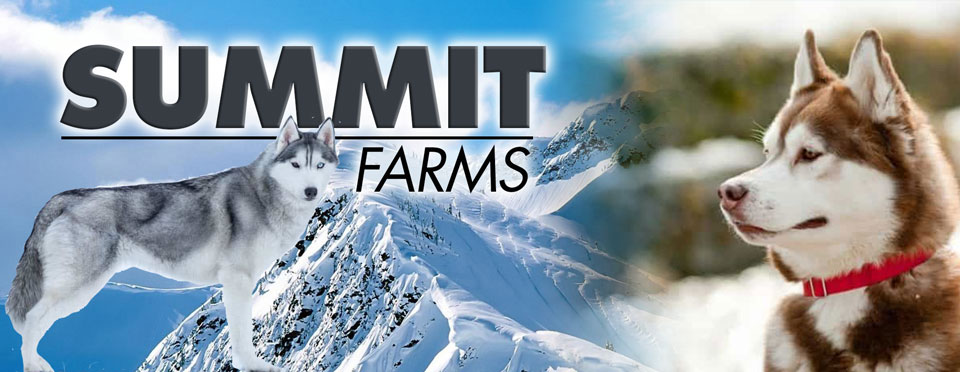Alaskan Husky
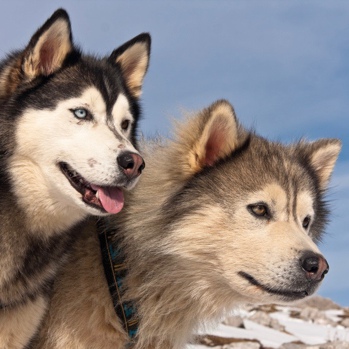
The exact details of the Alaskan Husky’s origin are somewhat unclear, although it is known that the first domesticated dogs were introduced by Siberian migrants to North America around 4500 years ago. Genetic studies have proven a close relationship between the Alaskan Husky, Siberian Husky, and Alaskan Malamute. The Alaskan Husky, however, shows more evidence of cross-breeding with dogs which were later imported to the continent by European settlers. Other breeds implicated in its development include the Greyhound, Saluki and German Shorthaired Pointer, which may go some way toward explaining the slender profile and generally low proportion of body fat in the Alaskan when compared with the other Arctic breeds.
The Alaskan Husky developed along distinct lines, bred for different features; some for strength, but most for speed and endurance. Because of their lean physique, they are known to require more care and attention than other, similar breeds, but their superior athleticism ensured that Alaskans remained the preferred choice of many ‘mushers’, frontiersmen who relied on their dogs not just to earn a living, but for their survival. Today’s mushers are generally competitive sledders, although the Alaskan Husky is still employed to haul freight in some Northern communities. It is not recognised by any of the kennel clubs because of the wide variation in its appearance and other characteristics, but its future nonetheless appears assured by its continued popularity as a working dog.
Alaskan Malamute

The Alaskan Malamute, like the Shiba Inu of Japan and the Basenji of the Congo, is one of the basal breeds, meaning it can trace its origin to long before the modern selective breeding efforts which produced most of our recognised modern breeds. Genetic studies suggest that the Malamute may share some common ancestry with the Siberian Husky and Alaskan Husky. It is believed that the natives of Siberia or East Asia may first have begun selecting for Malamute traits several thousand years ago, before the breed would have arrived in Alaska with the Thule people around one thousand years ago.
Malamutes were used as multipurpose utility dogs, being expected to haul freight (and later sleds) over the snow and ice, as well as being able hunting dogs, locating seals’ low holes in the ice. Individual dogs have been recorded as capable of pulling loads of almost 1.5 metric tonnes over ice for extended distances. They were also much-prized as companion dogs, and would protect their owners from attack by bears. The breed remained almost untainted by external breeding efforts, when the Klondike Gold Rush created great demand for these canine ‘beasts of burden’, and due to lack of available dogs, some were interbred with other breeds. While not as fast as a Husky, the Malamute exhibits incredible strength and stamina, and so would have been much sought-after to aid prospectors and their equipment.
A great number of Alaskan Malamutes were called into service during World War II, and in spite of their service, most survivors of the conflict were euthanised after the war. All modern Malamutes can now trace their lineage to around 30 surviving dogs from the M’Loot and Kotzebue families, which were brought together for breeding by Robert J. Zoller, a US Naval officer.
The American Kennel Club officially recognised the Alaskan Malamute in 1935 with the UK Kennel Club following suit soon after.
Alaskan Klee Kai
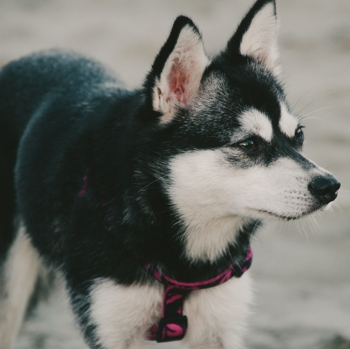
The very first AKK litter, born in Oklahoma, was a happy accident and the result of an unplanned mating between a Siberian Husky and an unknown father. This produced a litter of miniature puppies that looked like their mother in everything but size.
At that time, in another happy twist of fate, Linda Spurlin from Alaska happened to be visiting relatives in Oklahoma and saw the puppies. She was immediately taken with this small Siberian Husky-type and it set her thinking. Back in her native Alaska, Linda set her mind to how best to recreate these puppies, given that the breed of the original father wasn’t known. Her solution avoided the path of breeding together the smallest examples or ‘dwarves’ of the Siberian Husky, but instead outcrossing with smaller breeds.
Linda brought in blood from other small Spitz type breeds, such as the Schipperke and American Eskimo dog. This had the distinct advantage of avoiding unhealthy dwarfism genes, which can be accompanied by undesirable health traits, and introducing fresh genes that made for a healthier dog. The result is the Alaskan Klee Kai as we see it today.
American Eskimo
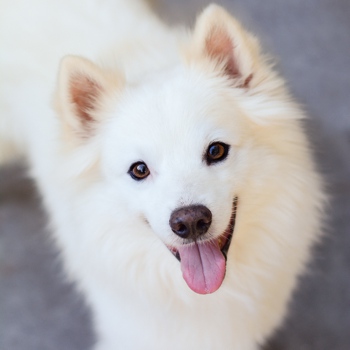
While you might be tempted to guess that this dog was developed in America and is related to breeds, such as the Northern Inuit Dog, both assumptions would be far from the truth. Initially from Germany, the American Eskimo Dog was only brought to the USA in the 1800s, and is a Spitz breed, closely related to the German Spitz, who is its predecessor. As well as the German Spitz, other contributing breeds are thought to include the Keeshond, Pomeranian and Italian Spitz. While white was not always a common colour in the breed, it was the preferred colour of American breeders and owners alike, and soon became the breed standard.
Once known as the American Spitz, the reason for their deceptive name change is said to be patriotism. The Americans were loath to call their cherished pet anything that would remind them of their German enemies during the First World War. A radical name change was needed, and so the American Eskimo Dog was born.
These little dogs have always been beloved by humans, thanks to their devotion to their owners and their ability to guard their properties and farms despite their small stature. Incredibly, one of the American Eskimo Dog’s main claims to fame is their well-documented history in the circus as performance dogs in the 1900s, when circus acts were big business. They would dance, partake in comedy acts and, it is said that, one of their most popular tricks was, believe it or not, tight-rope walking. In fact, the circuses would sell their performance dogs’ puppies to spectators after the show, hence the reason many American Eskimo Dog owners believe (quite rightly) that their dog is likely a descendant of these famous performing canines.
The UKC officially recognised the breed in 1919, although their breed standard was not written until long after, in 1958. More recently, the American and Canadian Kennel Clubs have accepted the breed, though it is still not formally acknowledged by many international Kennel Clubs, including the UK’s Kennel Club. Confusingly, because of this, some owners will compete their dogs internationally as German Spitz, though these two breeds have not been the same for many years.
Siberian Husky

The Siberian Husky was originally called the Arctic Husky and before that the Siberian Chukchi. It was developed around 3000 years ago by the Chukchi Indians, who lived in the Soviet Arctic. They were eventually introduced to Alaska and then Canada and America. These dogs provided a means of survival for these small tribes of people living in extreme conditions, acting as sled dogs and assisting with hunting. They have a lot of stamina, which made them ideal for travelling long distances over difficult, Arctic terrain. Although the Siberian Husky is now found around the world, the Chukchi continue to breed them and use criteria such as their obedience, endurance, willing and friendly character, and size to select which lines they use, ensuring a working dog which is easy to keep and train.
Outside the area of their original development the Siberian Husky originally rose to fame in 1925 after proving its ability in the All-Alaska Sweepstakes – a gruelling race between Nome and Candle in Alaska and back again. They are the lightest and fastest of the sled dogs. Today the Siberian Husky is a popular companion but is a breed which is commonly misunderstood, due to the large amount of exercise they need and incompatibility with many people’s lifestyles. Insufficient exercise and mental stimulation can lead them to develop unhealthy and destructive behaviours, despite their good natures. Their need for exercise and trainable nature means that they excel in modern dog sports such as fly ball and agility, as well as mountain search and rescue dogs.
Samoyed
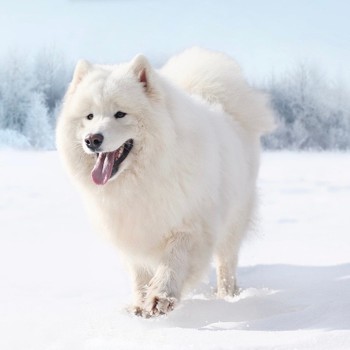
The Samoyed is a basal breed, predating the development of most of the modern breeds with which we are familiar. It is a member of the Spitz family, and may share common ancestry with the Alaskan Malamute and Siberian Husky. These dogs were vital to the survival of the Nenet Samoyedic people of Northern Siberia, being tough enough to survive the local climate, while capable of working in a variety of roles. These included hunting and hauling cargo, as well as helping to herd the reindeer that these people farmed.
While some historians believe the Samoyed was also used as a food source, this seems to have occurred only rarely, and out of dire necessity, as the breed lived as a companion with its owners, and was valued as a source of warmth, being allowed to sleep among its human family. The thick double coat was, however, used for clothing, and even today certain enthusiasts believe wool spun from Samoyed hair to provide superior insulation to other wools.
The breed was used by many of the Arctic expeditions of the nineteenth century, being favoured by Ernest Shackleton and Fridtjof Nansen for their explorations, and suffering terrible hardship and loss of life along with their handlers. By the turn of the twentieth century, the Samoyed was gaining in popularity in the West, with aristocratic patrons including the Duke of Abruzzi and Queen Alexandra contributing to the refinement of the breed. Such a following ensured that the breed was quickly recognised by the Kennel Club in 1909, and today it ranks as the 65th most popular pedigree dog with the American Kennel Club.
Greenland
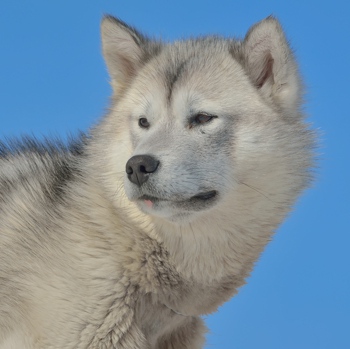
Like many of the Spitz-type breeds, the Greenland Dog’s history is closely aligned with that of the Thule people. These Siberian adventurers traversed the Arctic ice to arrive in Alaska over 1000 years ago, and rapidly spread across North America, bringing their dogs with them to haul their belongings, aid in hunting, and protect them from the indigenous wildlife. Unlike most of our modern breeds, which are genetically related to the grey wolf, the Greenland Dog, and its cousins, are more closely related to the long-extinct Taimyr Wolf, implying they may have been first domesticated thousands of years earlier. On their arrival in Greenland, the Greenland Dog’s ancestors would have encountered other, native breeds, and an equilibrium was eventually established between these two groups through interbreeding.
The Thule’s descendants, the Inuit, have continued to use the Greenland Dog for its original purposes over the intervening millennium, and so valued is the breed that a law is in effect that bans the interbreeding of these dogs with other breeds. It is said that the Inuit are unsentimental about their dogs, and that they are seen primarily as a source of muscle power and labour; however, there has also always been a focus on maintaining the breed’s appearance, and dogs that were temperamentally unsound would not have been tolerated, so despite the Greenland Dog’s utilitarian background, it is a dog that exhibits many of the traits we in the rest of the world would seek in a pet. However, it is in fact seldom seen in Europe, and there are probably fewer than 100 currently registered in the United Kingdom. Furthermore, a large-scale genetic study of many dog breeds carried out in recent years described the Greenland Dog and Canadian Eskimo Dog as being genetically identical, meaning a debate is raging about whether or not these should actually be considered separate breeds.
Seppala Siberian Sled dog

The Seppala Siberian Sleddog is a rare working dog breed, the Seppala Siberian Sleddog is developed for the purpose of pulling a sled in cold country. It is a moderate-sized dog averaging 18 to 23 kg (40 to 50 pounds) weight and 56 to 58 cm (22 or 23 inches) height. Colours and markings are considered of little importance; eyes may be brown, blue or any combination of the two colours. Seppalas are active and energetic but very docile and trainable.
The defining characteristics of the breed are its natural, primitive appearance, its highly developed work ethic, and its affectionate, cooperative, and highly bonded nature. They tend to be more trainable than other sled dogs and to be more highly bonded to their owners. The Seppälä Siberian Sleddog disposition is active, merry, and often quite inquisitive, although sometimes showing great reserve with strangers. A stable and serious temperament, neither nervous nor aggressive, is characteristic. Natural, innate sleddog mentality is a primary characteristic of Seppälä dogs. Their nature is highly cooperative. They show great seriousness in their work in harness.
